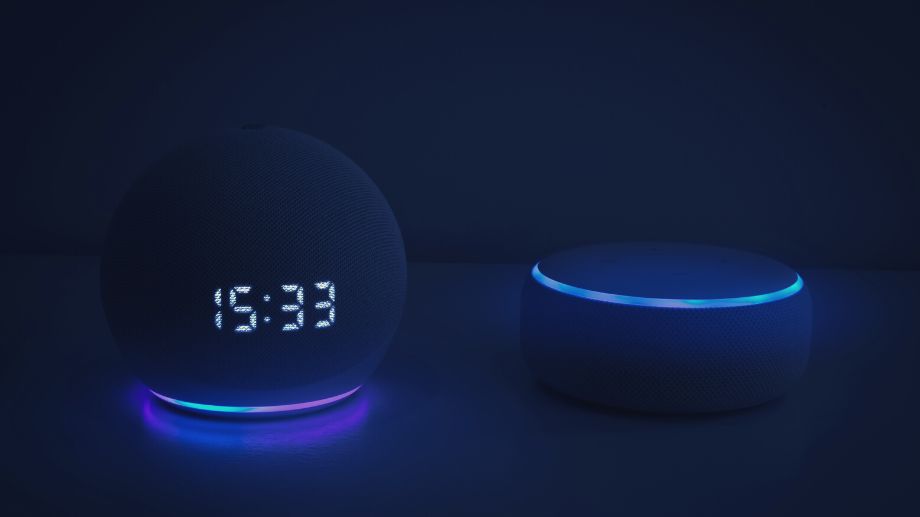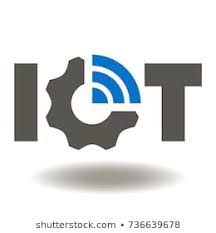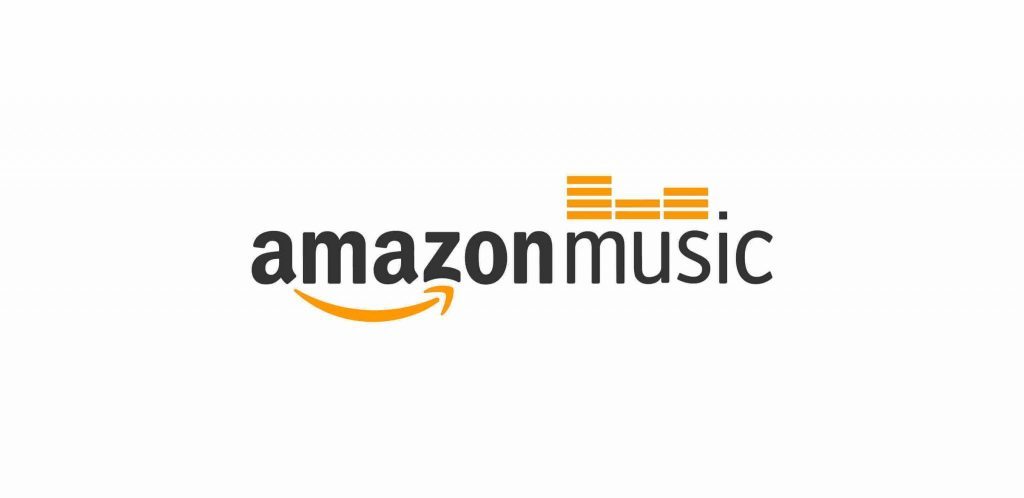alexa
Amazon is working to boost the capability of Alexa. Here’s how
Amazon Alexa, the voice-activated assistant, has quickly become a household name since its debut in 2014. It has evolved from a simple device that could answer basic questions to a fully-fledged platform that can control smart homes, plays music, set reminders, order groceries, and more.
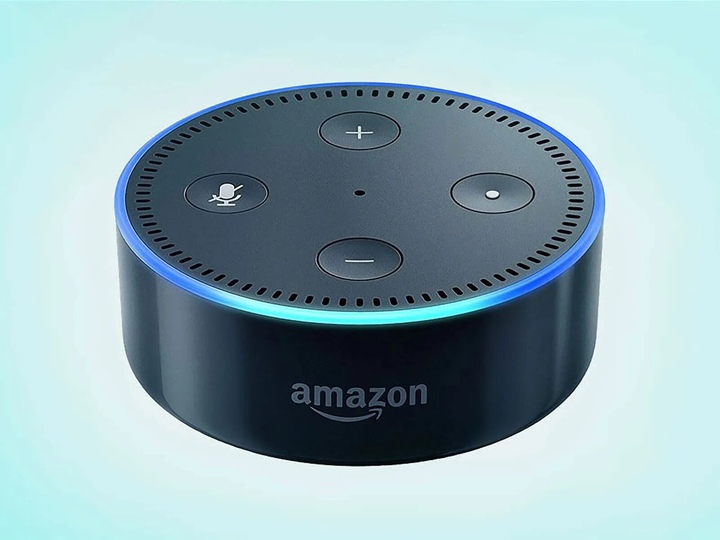
But Amazon is not stopping there. The company is working on boosting the capability of Alexa even further in several ways. Amazon CEO Andy Jassy revealed Monday that the company is developing a more “generalized and capable” large language model (LLM) to support Alexa.
Also Read: Amazon sees cloud slowdown in April, shares erase gains
Although Alexa has been powered by an LLM from Amazon, according to Jassy, the tech giant is currently developing a new LLM that will be more powerful. Jassy is certain that the addition of a better LLM will aid Amazon in its mission to create “the world’s best personal assistant,” but he also noted that it will be challenging to do so across a variety of fields.
“Large Language Model” (LLM) refers to a type of artificial intelligence technology that is used to process and analyze natural language data. Large Language Models are a type of deep learning model that uses neural networks to process large amounts of text data and generate outputs, such as text or speech.
Some examples of LLMs include OpenAI’s GPT series, Google’s BERT, and Facebook’s Roberta. These models are trained on massive datasets, often consisting of billions of words, in order to learn patterns and relationships in language. They use this knowledge to perform a variety of natural language processing tasks, such as language translation, sentiment analysis, and text generation.
LLMs have a wide range of applications, from language translation and sentiment analysis to chatbots and voice assistants. They are particularly useful in situations where a large amount of text data needs to be processed quickly and accurately.
Jassy emphasized that while Amazon has had years to invest in AI and LLMs, small businesses do not have the resources to do so, which is why the business released Bedrock earlier last month.
By using pre-trained models from firms like AI21 Labs, Anthropic, and Stability AI, Bedrock offers a method to create generative AI-powered applications. Bedrock also provides access to Titan FMs (foundation models), a collection of models that AWS has internally trained and is available in a “limited preview.”
Also Read: Amazon plans to trim employee stock awards amid tough economy
ChatGPT has taken over the internet and grown in popularity since its debut last year. Given the hype associated with ChatGPT, it should come as little surprise that top technology businesses are attempting to improve their own products using LLM in order to keep up with the rapidly evolving AI market.
The Information stated recently that Apple is creating Siri upgrades based on LLM. Google is probably taking similar steps with Assistant.

I am a law graduate from NLU Lucknow. I have a flair for creative writing and hence in my free time work as a freelance content writer.
Bridging the Gap- Success Story of IoT
The Internet of Things has brought the world together and finds large-scale application in several fields. Healthcare, agriculture, energy development, transportation and the communication sector have all improved thanks to IoT. But how did this revolutionary technology come to be? Here’s a look at everything you need to know about IoT and how it became such a huge success.
What is the Internet of Things?
British industrialist Kevin Ashton came up with the term Internet of Things in 1999. It essentially refers to a global network of devices, smart sensors, buildings and vehicles which connect via networking and electronics. These devices work together and collect data, transfers it and analyses it to learn from it. Everything from complicated cardiac sensors which monitor heart rates, to automatic lights which turn off when not in use come under this category.
About the Founder
Kevin Ashton was born in Birmingham in 1968. He studied Scandinavian Studies at the University College London and after graduating in 1994, joined Procter & Gamble in 1997. He later founded the Auto-ID Center with Sanjay Sarma, Sunny Siu and David Brock. The centre grew under their leadership and even brought in over 100 sponsors.
Once the research was completed, MIT licensed it to GS1. Ashton then found start-ups like ThingMagic, EnerNOC and Zensi, which was acquired by Belkin International in April 2010. He later worked on the Belkin Wemo system and constantly writes for the Medium and Quartz.
Coining the term Internet of Things
The term Internet of Things or IoT came to be when Kevin was making a PowerPoint presentation in the 1990s. He did so to convince a senior manager at Procter & Gamble, that the company should invest in RFID tags. While people at that time knew that the internet was big, they were unaware of its applications.
Hence, Kevin felt that having the word Internet in his presentation could help interest people. He hastily coined the presentation the Internet of Things as they wanted to monitor objects. Somehow, the gamble worked, and soon enough IoT became a popular phrase within the industry.
Building IoT
Kevin was bored with the term ‘smart packaging,’ by then. He explained to his colleges how this idea would work as a Network of Things. The internet was in many ways a Network of Bits. Put the two together, and voila, you get the Internet of Things or IoT. At the time he presented the name, there were no fireworks or large celebrations.
It wasn’t an instant success, but the name stuck. It was Gillette which decided to fund his research at MIT. Ashton relocated to Massachusetts and co-founded the Auto-ID Center; a research lab that laid the foundation of IoT.
Growth of IoT
Between 1999 and 2005, it wasn’t a popular term as the idea was very new. But in 2008, the phrase sprung to life due to developments in the field. An instance that helped was the exponential growth of Twitter. By 2008, Twitter had grown by about 750% and had reached 5 million users. The acronym IoT became viral, and the #IoT became a popular Twitter hashtag. Today, the Internet of Things is a part of our language and is one of the topmost business growth drivers within the industry.
Since then, concepts like Device to Device (D2D), the Electronic Product Code (EPC) and Enterprise IoT have taken over the world of technology. Studies predict that by 2020, there will be over 50 billion connected devices around the world. While the definition of the Internet of Things has changed along the way, Kevin Ashton’s vision made all this possible. Hence, he was referred to as the Father of IoT.
Are we Using the Term Right?
Kevin notes that the number of people using it, knowing what it truly means is few. People tend to misplace their true meaning and use it to refer to anything that is connected to their phones. In essence, IoT refers to sensors and devices that gather and transfer information about the real world through the internet. An easy example to understand what IoT means is that of your smartphone.
It has over ten sensors built into it, and they all connect to the network or internet in some way. You can do so many different things with your phone, including clicking pictures and navigating. That is the true essence of the Internet of Things.
Twenty years ago, when Kevin Ashton sat in Procter & Gamble’s R&D centre in Surrey, he never knew he was going to change the world. The 30-year-old computer scientist just wanted to get the company to use RFID tags to monitor their products. But since then, the term and the technology has come a long way, and none of it would have been possible if not for Kevin.

Being a cinephile with a love for all things outdoorsy, Athulya never misses a chance to chase inspiring stories or poke fun at things, even when the subject is herself. Currently pursuing a degree in mechanical engineering, she is someone innately interested in technical and scientific research. Music reviews and op-eds define her as they allow her to explore different perspectives. Though sometimes she thinks she makes more sense playing the guitar than she does while writing.
Amazon Alexa Event : Everything That Amazon Announced this Year
The festive season is almost here and so the Amazon’s sale is. Amazon ahead of its upcoming season sale hosted its Alexa event, and to include more products to its sale, the company just introduced a new lineup of products at the event.
Last year, the company released around 70 products, including the echo speakers and many updates to its old products. Though we get the idea about the new launches in advance through some of the leaks, this time, Amazon was successful to keep the things under the wraps. But as the event is final over, we have got news about everything it launched at the Alexa event.
The Alexa Event was an invite-only event and the company took it to the stage to introduce its guest with new Echo devices, new Echo earbuds, a new Echo display, Smartglasses, and even a revamped oven powered by Alexa.
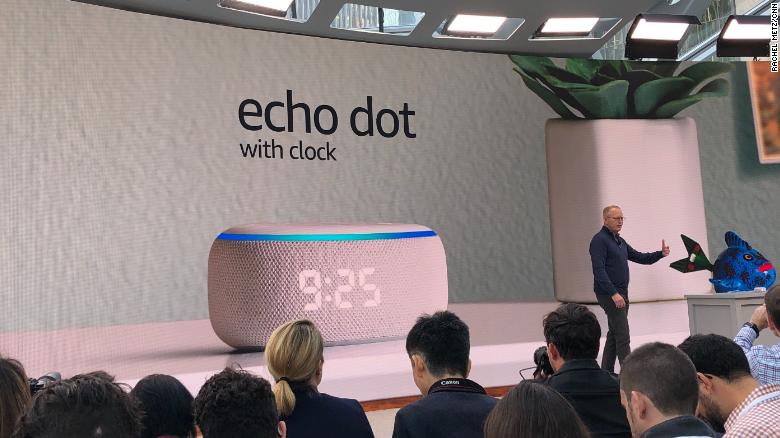
This time, the company came up with some unique upgrades to its Echo devices, like an Echo Dot with a clock. Amazon has now included a LED clock to its Echo Dot, that can also show the weather. The clock can be switched off, if not required. You can also use it to set the alarm. For this new feature, you need to pay an extra $10, making the price of Echo Dot a $59. It means the old Echo Dot is still there, and you can even buy it without the clock.
After Google’s Nest Max and Apple’s HomePod, this time, Amazon has brought its new Echo Studio, that offers a 3D audio and Dolby Atmos. The devices include a 5.25-inch woofer, and a 1-inch, front-firing tweeter. There are also three, 2-inches, mid-range speakers included in the speaker to provide awesome audio quality in different directions in the room. The company has also added the lossless music playback to the speakers, such that it will produce a great sound when Amazon’s HD songs are played on it. The speaker costs $199.99.
Amazon, like the other big companies, has now brought new Echo earbuds that also render support for Alexa. The wireless earbuds are incorporated with Bose’s Active Noise Reduction Technology and cost $129. These super small earbuds can run up to 5 hours with full charging, and with its case, you can charge them three times. These earbuds are one of the surprise elements from Amazon.
Another surprise product that the company revealed at the event is the 8-inch screen Echo Show 8. The devices come with an inbuilt camera and have got an HD display, such that you can make quality video calls through it. The device is perfect for watching videos, playing music and even keeping an eye on your kids. The price of the device is set to be $129.
Incorporated with four micro speakers, the company introduced a pair of eye frames costing a $179.99. The eyeglasses offer support for Alexa, such that it reads the notification and other information to the user. The eyeglasses are connected through the smartphone and lead the sound directly into your ears. There is no display, but Alexa will do all the work for you.
Another unique product that the company released during the Alexa Event is a Ring named Echo Loop. The $129 ring is a smart ring featuring a haptic engine and two microphones. The ring and the frame will only be sold on an invite-only basis.
Other than these devices, the company launched a $249.99 Alexa-powered smart oven, a $25 Echo Flex device, $249 Eero router, Amazon Sidewalk (a device to connect all the IoT devices around you), etc. There have also been some new upgrades to the Amazon devices, like the multilingual-mode and Neural Text to Speech model added to Alexa.

Yashica is a Software Engineer turned Content Writer, who loves to write on social causes and expertise in writing technical stuff. She loves to watch movies and explore new places. She believes that you need to live once before you die. So experimenting with her life and career choices, she is trying to live her life to the fullest.
Amazon Gears up for its Annual Hardware Event to be Held on 25th Spet
We have not even got over with the Apple Event held on 10th September yet, and now, Amazon has also announced one, that will take place on 25th September at its Seattle HQ. The company, in the announcement, said on Thursday that the upcoming ‘hardware and services’ event will cover some new launches and upgrades in its existing products as its previous Amazon event did last year.
In the last year’s event, the company came up with the new Amazon Echo products, Alexa-controlled microwave, a wall clock with Alexa built-in and many more things. For now, the company is mute on what ‘new’ the company be hiding in its robe, and what would be the major highlight of the Amazon event. But through the previous launches, there is an estimation that the Amazon Echo and Amazon Fire TV might be the among the things Amazon will be talking about.
Previously in the CES 2019, the company completely bragged about Alexa, and how its partners are up to integrate it with anything at one’s home, from TVs to home security systems, from a dog bowl to a lawnmower, from headphones to speakers, etc.
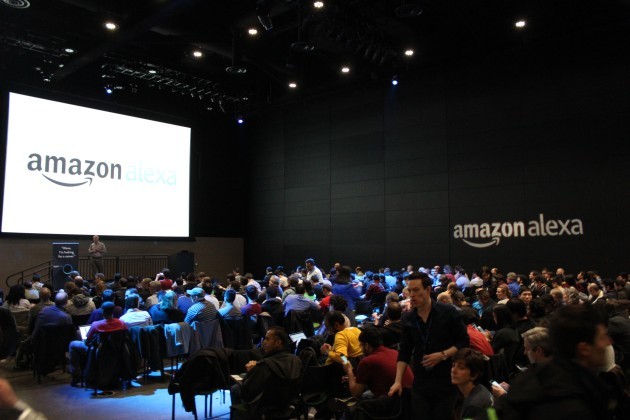
And after the company announced a new Fire TV Cube as well as new Fire TV series during the IFA 2019, earlier this month, the Amazon partners are focusing on its Fire TV software and embedding it into new televisions and smart speakers, as well. So quite possibly the company may be discussing the same along with its new launches.
Along with that, it is expected that there will surely some new upgrades to the amazon’s Echo speakers, like a refresh to the standard echo speakers. Though it had launched the Echo Plus last year, with Alexa being almost everywhere, there might be some good changes to the smart speakers to make it more useful with Alexa, similar to Apple’s Homepod. There may also be some better changes to the services like Amazon Prime the company has been offering to its users.
Until the next announcement, we can only make the estimations, but since the Amazon event is not too far, we do not have to wait long either.

Yashica is a Software Engineer turned Content Writer, who loves to write on social causes and expertise in writing technical stuff. She loves to watch movies and explore new places. She believes that you need to live once before you die. So experimenting with her life and career choices, she is trying to live her life to the fullest.
Alexa Users Gets Ad-supported Music Streaming for Free
Though the rumours of Amazon rolling out an ad-supported streaming music service was making rounds till the last week, it was not final that when the company will launch the said service. Amazon, on Thursday, confirmed that all the company’s Echo products will now be streaming the ad-supported music service for free.
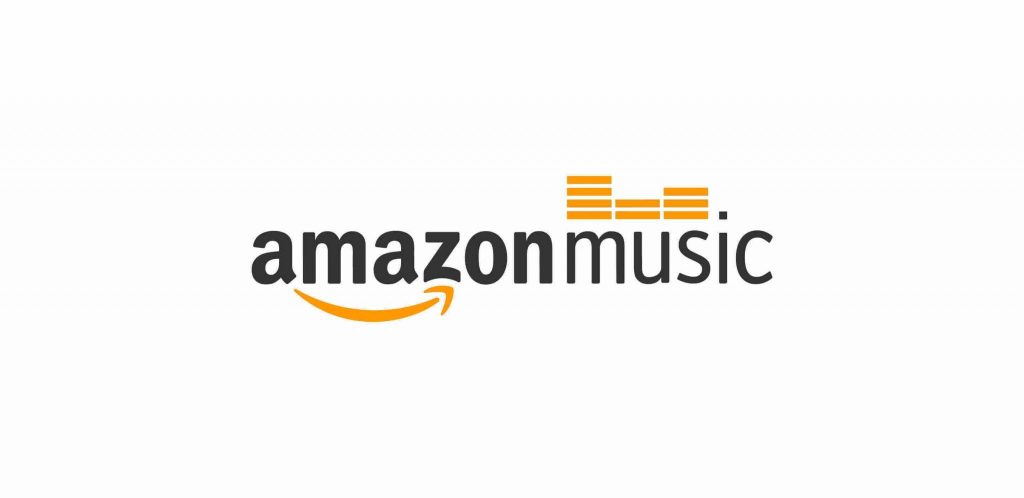
The Echo-devices will now be able to play music from the top playlists of Amazon Music Unlimited, and the user does not have to be an Amazon Prime or Amazon Music Unlimited member. Baing ad-supported, the music streaming service, from Amazon, will play smaller ads in between the songs in random time intervals.
Earlier, the users needed to subscribe for the Prime membership to use the music streaming service bundled to it, or they could buy a separate plan to use Amazon Music Unlimited, by paying a monthly $3.99 fee to use on an Echo device and $9.99 fee to use the service on a non-echo device.
Noticeably, the company has announced the news on the same day Google launched the ad-supported free YouTube Music streaming on Google Home smart devices. Also, Amazon has directly challenged its another rival, Spotify, that was the only music streaming service to provide free as well as paid service to its users.
Amazon, along with its ad-supported music streaming service has introduced referral deals to its subscribers, to get more users to buy its Alexa-powered family of Echo, other smart home devices, and its Prime membership. The music streaming service included in the free membership includes over 2 million songs in different languages, and the paid subscription plan of the same service has a library of over 50 million songs. Noticeably, last year, Amazon’s music streaming service alone had tens of millions of active subscribers, and the company sold over 100 million Alexa-enabled devices last year.
Having a music streaming service for free from the same company, as the smart speaker belongs to, is a better choice for every Echo speaker owner, as they do not have to pay extra money for a music streaming service from other company to play on those devices. Also, this is quite a move by the company to increase the sales of its smart speakers over smart speakers from its rival companies.

Yashica is a Software Engineer turned Content Writer, who loves to write on social causes and expertise in writing technical stuff. She loves to watch movies and explore new places. She believes that you need to live once before you die. So experimenting with her life and career choices, she is trying to live her life to the fullest.
